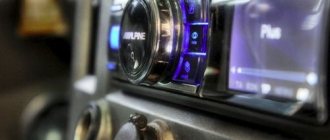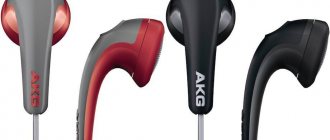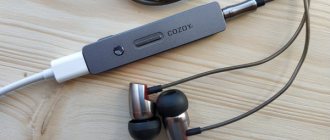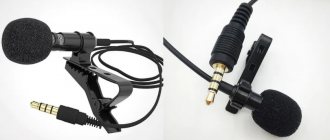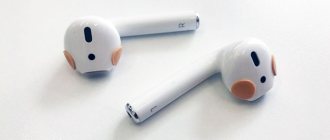What are Soundcare SuperSpikes and why should I use them?
Save and Read Later -
Any attempt to eliminate spikes or use various pads to prevent damage to surfaces leads to an obvious decrease in sound quality.
Using acoustic spikes undoubtedly produces the best sound!
In addition, traditionally designed speaker stands are not ideal from a mechanical point of view, as they are also subject to internal vibrations and resonances.
The result of serious study of the problem by Soundcare specialists was the development of specialized racks for acoustics and Hi-Fi components SuperSpike, which, thanks to their unique design, not only improve sound quality, but also prevent damage to the surfaces on which speaker systems and equipment are installed.
Soundcare SuperSpike has received numerous positive reviews in many leading periodicals, such as HiFiChoice, HiFi+, Haute Fidelite, High Fidelity, Audeo and others.
Experts noted a noticeable improvement in the sound stage, increased transparency in mid-frequency reproduction and better response in the low-frequency range.
Technical tests of Soundcare SuperSpike, carried out in Norway, Japan, USA, Germany and England, also showed excellent results.
As a result, a number of high-end loudspeaker manufacturers already supply their products with Soundcare SuperSpikes installed.
What are Soundcare SuperSpikes?
SuperSpike is a support (stand) for speakers and other hi-fi equipment, the design of which is patented by Soundcare. Possessing all the advantages of traditionally designed racks, SuperSpike has a number of significant advantages, in particular, it solves the well-known problem of scratches, which inevitably arises when using ordinary spikes. The SuperSpike's non-removable design includes a specially shaped spike and a special base plate, combined in a plastic casing, which allows the user to move the equipment without disassembling it or scratching floors and other surfaces.
Why use Soundcare SuperSpikes?
The use of spikes as stands for speakers and/or sound-reproducing equipment breaks the unwanted mechanical connection of the equipment with the surface on which it is installed. This prevents the spread of parasitic vibrations and their influence on the sound reproduction process.
From a physical point of view, this means concentrating the entire weight of the equipment on extremely small surface areas, resulting in extremely high pressure at the point of support.
Soundcare SuperSpike is not just a spike!
In addition, thanks to the special design of the SuperSpike, the stand's own internal resonances, which also negatively affect the quality of sound reproduction, are effectively suppressed.
The results of numerous listening sessions and tests have shown the unconditional effectiveness of using SuperSpike not only as supports for speaker systems, but also for other Hi-Fi equipment, primarily CD transports, amplifiers and, of course, vinyl disc players.
FAQ
Question 1: Why do you need to use spikes at all?
Question 2: What load are the studs designed for?
Answer: Soundcare SuperSpikes have been tested under loads of up to 400 kilograms (per spike). In this case, the deformation of the steel base was negligibly small - only 0.02 mm. The tenon itself suffered no measurable deformation at all under this load. This "surreal" strength is built into the SuperSpike's design: a high-alloy steel spike with a spherical tip rests on a flat base made of mild steel. This achieves maximum load capacity and minimum contact surface. You can safely install any existing speaker systems and other Hi-Fi equipment on our spikes.
Question 3: Why do self-adhesive studs come in a pack of three?
Answer: From the school geometry course we know that any plane is defined by three points. Thus, speaker systems installed on three spikes will always be perfectly stable without any additional adjustments.
Question 4: How long are Soundcare SuperSpikes designed for use?
Answer: The main materials for our studs are steel and zinc. Alloy steel, from which all load-bearing parts of the studs are made, is a very durable material. Soft, non-crystalline zinc effectively dampens resonances that occur in the stud, which reduces stud wear due to vibration. SuperSpikes have been tested to simulate daily use for ten years. No residual deformation or wear of the tenon parts was detected. Thus, we can confidently say that the service life of our studs is at least 20 years.
Question 5: Do you think my wife would approve of purchasing a Soundcare SuperSpike?
Answer: We attach great importance to the appearance of our products and are confident that SuperSpikes look better than ordinary spikes in any case. In addition, you can firmly promise your spouse that your hi-fi equipment and speaker systems will never again leave scratches on shelves and floors.
Question 6: Can Soundcare SuperSpike improve my relationships with my neighbors?
Answer: Most likely, your neighbors will be very grateful to you for using SuperSpike, because they will be free from vibrations and resonances that easily spread throughout the building through walls and ceilings.
Question 7: Why does using SoundCare spikes provide the best sound quality?
Answer: Of course, Soundcare SuperSpike and conventional stud designs use basically the same principle (applying load to the minimum contact patch). However, many experts and our clients claim that they clearly feel an improvement in sound quality when using SuperSpike. This fact can easily be explained by the special design of Soundcare products using a large amount of zinc, which effectively absorbs the resonances that occur in the stud.
Source
Edda about spikes, or why reducing the support area does not dampen resonances
The reason for this publication was the discussion about spikes after our last article about the Neat IOTA Alpha speaker system. Thus, some readers argued (providing comments with “proof”) that the use of spikes as a decoupler between the speaker system and the floor dampens parasitic resonances, thus significantly improving the sound of the speaker system.
This popular belief has taken root in the minds of many audiophiles and music lovers, who, without wasting any time, rushed to purchase pointed stands for speakers, in the hope of getting “that same” “divine sound” (tm) without parasitic harmful resonances. However, everything turned out to be somewhat more complicated than simply buying spikes and screwing them to the system, since they (the spikes) themselves do not extinguish or eliminate anything. Reducing the support area, of course, greatly increases the pressure at the points of contact with the floor, while the vibration energy remains almost unchanged and is perfectly transmitted to the floor. For what reason this happens, and how you can make the spikes work, we will consider further. To be fair, I would like to note that under certain conditions, studs begin to work as a “sound enhancer,” but this requires more than just studs and they are not a vibration insulator. That is why a number of comrades who write about the “spike” effect on forums are not always lying and mistaken. In order to understand what and how, it makes sense to consider both the pseudoscientific views about the influence of thorns themselves, and the completely scientific basis for how they can work.
Velva's Divination of Thorns
Traditionally, a little mythology and humor.
Speaker spikes actually originated in medieval Scandinavia around the 9th century AD. The harsh Vikings intuitively felt that this approach would allow them to get rid of parasitic resonances and eliminate the vibration of the longship's hull when listening to pagan metal and war drums.
Among the mentions of thorns, a fragment of the thematic Edda has been preserved. Here is a short excerpt from this work:
Hearken to me, all sacred families, Great and small children of Heimdall, O One, I will tell them about the past of thorns, What Volund forged for the joy of mortals.
At the beginning of time, when Ymir lived, There were no spikes for speakers in the world, And the sounds and power of resonance of music made Drakkars crackle on campaigns.
That parasitic sound split the boats, And the brave warriors went to Hel, Until the great god Volund came up with Thorns that would get rid of harmful vibrations.
As is clear from the Edda, the miraculous properties of thorns were attributed to the great blacksmith god Wayland. From the experience of the ancient Scandinavians, their modern followers concluded:
In order to minimize the transmission of vibration from the acoustic design of the speaker to objects in contact with it (room floors, shelves, for example). The effect of using spikes is based on a radical reduction in the area of contacting surfaces, which is reduced to the area of the tip of the spikes/cones. It is important to understand that installing speakers on spikes does NOT eliminate cabinet vibrations, but only reduces the efficiency of their further propagation.
Quote: user Ancient User - audioportal.hi-fi.ru)
Song about nickels and stone slabs
But jokes are aside, but seriously, the theory that justifies the anti-vibration effect of studs states that reducing the area of contact with the surface makes it possible to reduce resonances.
At the same time, the fundamental law of conservation of energy disappears somewhere from such reasoning, which states, among other things, that energy (any) does not disappear anywhere. The spike is hard and, accordingly, is an excellent conductor of vibration. Roughly speaking, the only thing a spike with resonances does is concentrate the energy of vibration (resonance) at the points of contact of the spike with the floor, and this essentially does not change anything, since the same amount of energy is transferred to the floor (more about energy density here).
At the same time, a number of manufacturers of products of this kind recommend installing them on so-called “nickels” (stands with recesses). The stands are made of metals with a density lower than that of spikes (the latter, as a rule, are made of hardened steel). Such a solution, from a physics point of view, has insignificant vibration-isolating properties; relatively soft metals (copper, aluminum) are able to partially absorb resonances due to shear deformation.
However, the effect of “nickels” is largely due to the use of special thick pads on the bottom (which are made like standard speaker legs from silicone, felt or PVC). In fact, the main element that dampens vibrations in such situations is the elastic absorber, i.e. the same felt or silicone, which have a significantly greater shear deformation than metals.
The path of resonance energy can be represented as follows: a spike made of hard metal is a conductor of vibration, a “penny” of soft metal is partial absorption, elastomer is significant absorption. Such a system will really work, but I still don’t understand why there are 2 first links in it. When using such a design, many people subjectively note significant changes in sound (it remains unclear whether the comparison was made with bare spikes or with standard speaker legs).
The most effective way of anti-vibration use of spikes of all the methods that are True from the point of view of philophonic philosophy (audiophilia) is the use of a massive base (stone slabs, etc.). The use of a heavy base is justified by the fact that it is truly capable of effectively damping HF vibrations. This is especially true for speakers with a relatively small own mass.
In this case, as in all previous ones, spikes are used as a conductor of vibration, a massive granite or marble slab acts as an absorber. It should also be noted that in this way high-frequency vibrations are dampened, and for low-frequency vibrations it makes sense to place felt under the slab. If you have a stone floor, then purchasing slabs is not relevant for you.
And a little more about the use of spikes
Spikes, as well as stands of other shapes, can “help” the sound in situations where it is necessary to prevent a speaker mounted on the bottom of the speaker from rubbing against the diffuser hangers on the floor, for example, or when, for one reason or another, it is simply necessary to adjust the speaker to a certain height.
Bottom line
Spikes never work as a vibration absorber (insulator), due to the fact that, due to fundamental physical laws, they cannot reduce the amplitude of vibration oscillations, but they can be used in a system that will, with varying efficiency, act as a decoupler of columns from the floor .
For those who are aware of the need for spikes, as well as for fans of the Scandinavian epic, our catalog contains goods of this profile (spikes, nickels) at a variety of prices from 119 rubles to $ 50-60. Meanwhile, we would like to emphasize that the manufacturers of speaker systems that are presented in our catalog take the creation of equipment seriously. This means that the speakers we sell are completely ready for full use (reproduction of high-quality sound) and do not require additional modifications.
Spikes for acoustics made from plumbing studs: does such a homemade product have a right to exist?
The idea is as follows: buy such studs from LM (issue price is 76 rubles), in order to add elegance - grind off the excess threads and, of course, put them on the rims. You will get spikes for acoustics. Does such a homemade product have a right to exist? And then the Moscow turners are completely greedy, some are 2, some are 4, some are asking 5 thousand for 8 studs.
Answers
What and how will we, or not, screw into the acoustics? And if you have homemade stands, look at me
Driven nuts into a 28 mm furniture panel, I will pass through it, 2 nuts from bottom to top for height adjustment.
I didn't find something from you. Or are there 2 photos in total? Can not see(
Spikes from Heko, not gum spikes
It’s not better to order from Ali then
What thread and weight are your speakers?
Sorry. I was in a hurry with the post. 11 kg. Each. Microlabs pro3, the sessions will stand on their original legs for now, while the idea is to make stands from 28 mm pine board, put the stands themselves on spikes. That is, they will be at the bottom of the stand. I'll fill the quartz stand with sand.
How much do mine look like?
I saw such plugs at Magnit-Cosmetic. We unscrew the ball and get an M6 thread at the end.
So this is for wine bottles, on the other hand, why not. We need to prove to the Moscow turners that they are wrong.
Who are the Moscow turners?
I recommend the Moskvoretsky market; I have sharpened small things there several times.
You can always reach an agreement.
Who-who? The worst enemies of audiophiles, that's who they are!
These Moscow turners are absolutely brutal, they are tearing skins off the workers, and on the next straight line I will complain about them to the President. Let him tell the Moscow mayor that the citizens are not happy.
It's true. And how the milling machine operators went wild!
This is just the beginning of the journey. Calm down friends, everything will work out over time and fall into place. And spikes and racks
I look forward to new products from you. 6490 already burned one for this and divided it
I’ll definitely create a topic soon, I’m serious. Just a reason to share.
Audiomania sells ready-made spikes. Different. And on Ali there are a dime a dozen of them :)) Why reinvent the wheel?
The receiver, speakers and projector took the last of my money, I have to somehow get out)
Then don't worry. Live with what you have. Money will appear, you will make improvements. You will have another joy. And then just bam in droves! and for the next improvement (if you want, of course) you will have to shell out a round sum again.
By the way, Ali's spikes are inexpensive. Cheaper than Moscow turners ask.
Then “you have to somehow screw it in”? Somehow more logical. The main thing is how many beautiful, original ideas there are. Here's another one. The washers can be taken from hardware supplies. Some reinforced ones. In the center of the larger ones, you can take smaller ones in diameter, and secure the entire structure (elements of the audio washers) by welding.
Get immediate treatment, like others in the comments
Are you seriously watching this clown?)
If I found myself in a dream among the admirers of this fellow from YouTube, I would wake up screaming in horror)
@Perry you made my morning with your comment! :)) I almost dropped my coffee from laughing.
I think I would have a similar reaction to such a dream :))
@landco This “scientific” figure did not hold anything in his hands further than my beloved Denon 720. On the set that he has at home, not only can you not hear the spikes and cables, you can’t hear the music there :))
It turned out something like this, in my opinion it’s quite good)
The main thing is where they will stand
